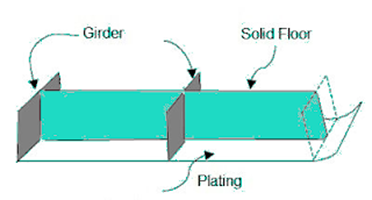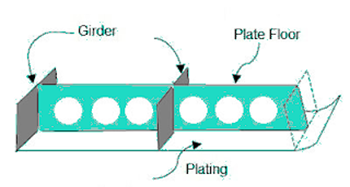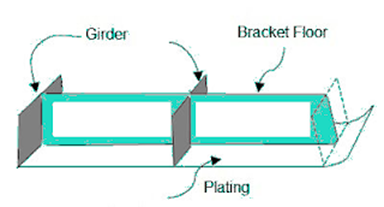Floors and Different Types of Floors
Unlike structures on land where a floor refers to something horizontal that you can stand on, floors on ships are the transverse stiffeners mounted vertically on the ship’s bottom. Floor structure is continuous from the centre to the side plating and supports the inner shell (tank top). They may either be solid plates (no cut holes except small half round drain holes at the bottom part) or plates with cut lightening holes.
Solid Floors

It is the easiest to comprehend, and consists of a solid plate, with no lightening holes cut into it (they lessen the weight of the plate and allow for the free flow of any liquids stored in the space). Normally it form a tank, below watertight bulkheads these floors are using
Plate Floor

Plate Floor is the one if the stiffener / floor plate is made of a solid plate with openings. This is done to optimize weight and also to allow free flow of fluids based on the purpose of the floor plate / part of the ship (Like a tank)
Bracket Floor

Bracket floor is the one if the stiffener / floor plate is made of a built-up section with a large opening. This is also done to optimize the weight, provided where much strength / structural integrity is not required and also on the purpose of the area of the ship
Share this article
Leave a Comment
Comments (0)
No comments yet. Be the first to share your thoughts!